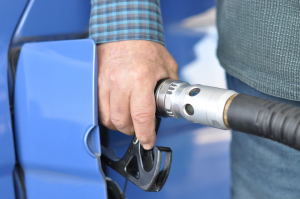Government Contest Seeks to Advance Fuel Use
The U.S. Department of Energy, in collaboration with Hydrogen Education Foundation, launched two years ago the Hydrogen Refuel H-Prize Competition to build the on-site hydrogen (H2) generation refueling systems.
In 2015, the organizers announced finalists to the competition and evaluated their solutions to the task of bringing hydrogen refueling to homes and companies and making it affordable.
The finalists had seven months to finish and install their systems at their choice of locations before testing began. Each system had scores for their dispensing pressure and time, their number of daily standard fills for cars, the tested availability, total cost of the system and its installation, and the direct cost per kg for every user.
Recently, the organizers announced SimpleFuel as the winner of the $1 million competition prize. People from Ivy’s Energy Solutions, McPhy Energy North America, and PDC Machines make up Team SimpleFuel. Its headquarters is in Waltham, Massachusetts.
The onsite SimpleFuel hydrogen station is so small it can fit in a garage of an ordinary residence. The mechanism behind their project involves electrolysis, which is the separation of hydrogen and oxygen that make up water molecules.
Electrolysis for hydrogen production

The unit operates through a combination of electrolyzer, compressor, and dispenser, with water as feedstock. While there aren’t any further details available on the hydrogen station’s proprietary electrolysis process, it basicly involves the use of electricity to split water into the needed hydrogen and oxygen molecules.
The electrolyzer used in the station consists of an electrolyte that separates a cathode and an anode. Depending on the kind of electrolyte material used, an electrolyzer may function differently from another. There are currently three types of electrolyzers: polymer electrolyte membrane, alkaline, and solid oxide.
With an electrolyzer, the carbon fiber tank of the SimpleFuel can deliver around 5 to 10 kilograms of hydrogen daily (the same fuel capacity of a Toyota Mirai), while oxygen is the only byproduct of the process.
Hydrogen station winner
The SimpleFuel can produce up to one kilogram of fuel in more or less 15 minutes and has a 700-bar fueling capacity. It is a bit weighty—larger than an EV charger or a gas pump—but it is solid when considering its functions.
It has the potential to deploy at different locations and has regular hookup utilities for water and electricity. It has an initial estimated cost of $200,000 for installation in businesses and public spaces, but eventually hopes to become affordable for individual owners to acquire.
It’s expected that utility companies will be the first to install units such as this, just like they have installed EV charging infrastructure in many locations.
A small unit like this can offer convenience for drivers using fuel cell vehicles that run on hydrogen, particularly while the H2 fueling infrastructure is underdeveloped in many states. Further, it could be economical for companies that use fleets of hydrogen-powered machines and vehicles.
Takeaway
Building infrastructure that can support hydrogen fueling of individual owners will eventually help increase the demand for this kind of renewable fuel. Supporting hydrogen refueling is promoting a sustainable future that will surely benefit younger generations.
Related Stories You Might Enjoy:
News: Honda Clarity Fuel Cell Introduced
News: Toyota Mirai Hits the Market
First Drive: Toyota Mirai
